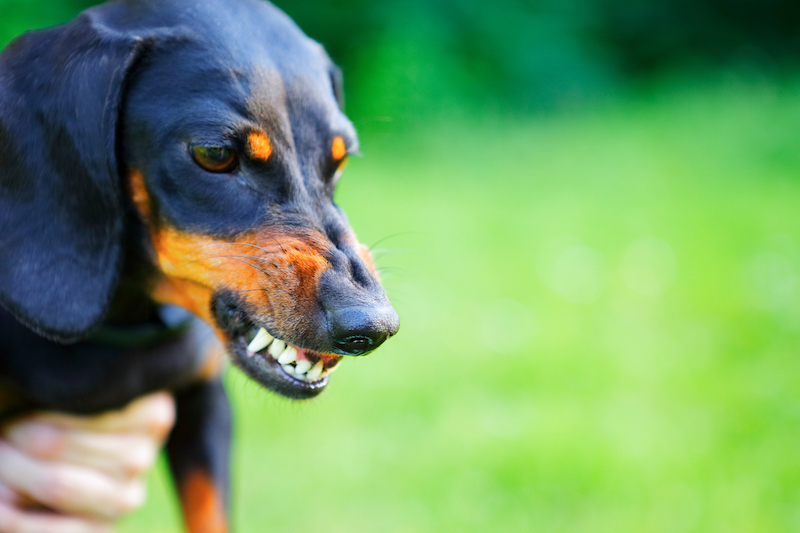Even the most mellow of dogs can at times become aggressive due to a stressful situation or to protect her pack or family. It is important for dog owners and the general public to be able to tell when a dog is showing signs of aggression, and if the likelihood of an attack is heightened as signaled by certain behavior.
It is also important to know when a behavior that may be normal most of the time signals potential aggression. So let us go over the most common signs of aggression in dogs.
Growling: Growling is not an automatic cause for alarm. Dogs growl for a variety of reasons, even during play as a sign of excitement; however, playful growls (as they run after a toy) is short. On the other hand, if the growl is sustained and has a distinct deep sounds, then that is definitely aggressive behavior.
Baring of Teeth: Unless this is a trick you have taught your dog, baring teeth is a clearly aggressive behavior. For dogs, teeth are weapons, and the only reason a dog would show its teeth is as a warning, so if a dog is baring its teeth, it is clearly sending a warning signal which should be heeded.
Tight Lips: The corners of a dog’s mouth, called the commissures, can be very telling. If the dog’s commissures are relaxed (whether the mouth is open or closed) it is indicative of a calm, relaxed, and comfortable canine; however, if the commissures are pulled back in a taut manner (and held in this position), then it is a sign of fear and discomfort. On the other hand, if the commissures are pulled forward (making the dog look like as if it is about to try and whistle), a ‘pursed’ position, then this is a sign that the dog is very agitated and is seconds away from growling, snapping, or biting.
Raised Hackles: The hair along the spine of a dog is called the hackles. I the hackles are raised, it can indicate that a dog it could indicate tense, stressed, or insecure. This must be accompanied with other body posture such as the lowering of the head, and lowering of its rear end; reason being that, the hackles may also be raised during other times such as when a dog is inviting you to play, but in such an instance, the raised hackles will be accompanies with a lowered front end, and most likely a happily wagging tail.
Stiff Tail: Unless you are hunting in the field with a pointer, and your dog is on point (pointing to game), a stiff raised tail is a clear indication of tension, even if it is accompanied by a little wag.
Aggressive behavior can be triggered by a variety of reasons why a dog may act aggressively, so the situation itself may not dictate possible aggression from a dog, especially since, like humans, each dog has its own personality, and limits.

